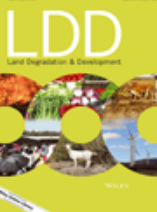E. Abakumov, E. Maksimova, A. Tsibart
“Assessment of postfire soils degradation dynamics: Stability and molecular composition of humic acids with use of spectroscopy methods”
Land Degrad Dev., 2017, 1–10.
DOI: 10.1002/ldr.2872
The effect of wildfires on the soils of the south taiga and forest-steppe environments of Central Russia (Histic Spodosols and Eutric Fluvic Arenosols) was investigated in terms of the content and quality of humic acids (HAs) using instrumental spectroscopic methods (solid-state carbon-13 nuclear magnetic resonance and electron spin resonance). The bulk elemental composition of HAs was not essentially altered in postfire soils; however, the organic matter of fire-affected superficial soil layers was characterized by changes in the structural composition and biochemical activity levels. Solid-state carbon-13 nuclear magnetic resonance spectroscopy showed that there is an intensive increase in aromatic compounds in HA molecules in soil from both the south taiga and forest-steppe environments. There is a pronounced and statistically significant decline of aliphatic chain content in response to exposure to fire. The free radicals content and the degree of molecular stabilization assessed with electron spin resonance showed an essential alteration of the HAs, expressed in the increase in the radical’s portion, in postfire soils compared with that found in soils not exposed to fire. It was also shown that the accumulation of aromatic compounds indicates only apparent stabilization of HAs due to the loss of periphery alkylic carbon species, which was confirmed by destabilization of the molecules as illustrated by the increase of free radicals.
